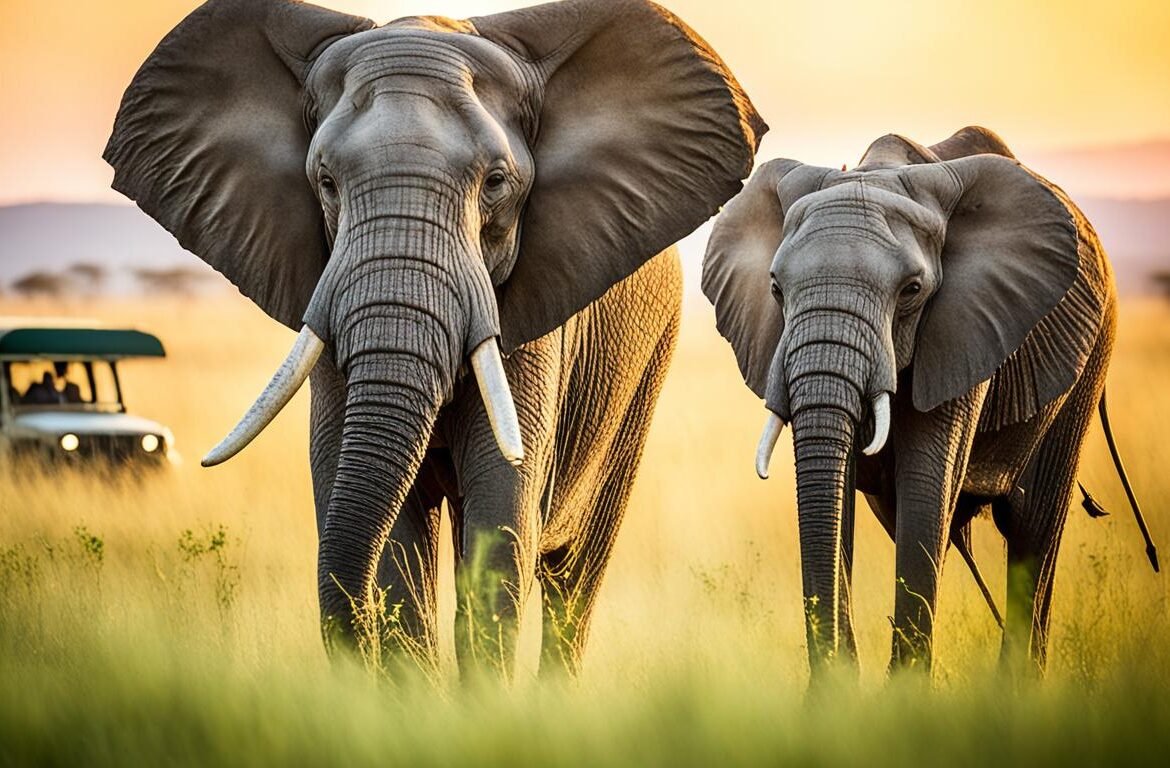Best Time to Visit Zambia for a Safari: A Seasonal Guide
Imagine yourself in the heart of Zambia’s wildness, surrounded by rustling leaves and the roar of lions. The magic of a safari is not just in the sights. It’s in the experiences that touch your soul. Each season in Zambia tells a unique story, from lush greenery to golden hues.
Finding the best time to visit can make your trip extraordinary. Whether you want to see vibrant wildlife or explore peaceful landscapes, knowing when to go is key. This guide will show you the best months for a safari in Zambia. It ensures every moment is memorable.
Key Takeaways
- The best time for a safari is from June to September for brilliant wildlife viewing.
- Peak safari season occurs in July and August with dry and cool weather.
- April offers low accommodation rates as many lodges reopen after the rainy season.
- Expect short, heavy thunderstorms in January and February, leading to flooded roadways.
- November features unpredictable weather but lower rates for accommodations.
Understanding Zambia Safari Seasons
Planning your adventure means knowing about Zambia’s safari seasons. These seasons are split into wet and dry periods. The wet season, from December to April, brings green landscapes and lively wildlife. But, heavy rains in January make travel tough.
Photographers love this season for its beauty. Yet, most camps close, limiting where you can stay.
The dry season, from May to October, is best for seeing wildlife. Animals gather near water, making them easier to spot. Temperatures are comfy, between 23°C and 36°C, perfect for outdoor fun.
This is the top time to see big cats and other predators. It’s also great for photography.
June and November are the shoulder seasons. They offer quiet settings, good weather, and cheaper places to stay. These months are perfect if you want great game viewing without the crowds. You can see bat migrations or wildebeest herds.
Choosing when to visit Zambia changes your safari experience. Each season has its own special moments. Planning for the weather ensures a memorable trip filled with wildlife encounters.
Best Time to Visit Zambia for a Safari: A Seasonal Guide
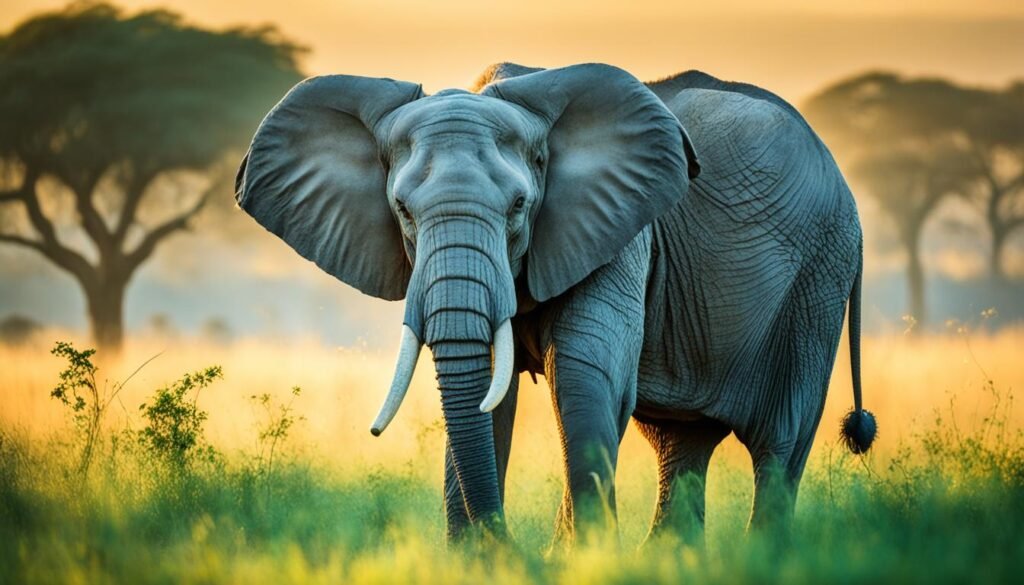
Knowing when to visit Zambia for a safari means understanding its seasonal changes. The dry season, from June to September, is the best time. Animals gather at water sources, making it perfect for viewing.
In April, you can find lower prices for places to stay as the rainy season ends. Even with showers, the land dries up, offering a great time for a safari. May sees many camps reopen, but walking safaris might be tough due to the mud.
June to September are the top months for a safari in Zambia. July and August are especially popular for great wildlife sightings. By September, it’s warmer, but animals still gather at water holes, making it a good time to see them.
April and May are great if you’re looking for a mix of beauty and affordability. Each month has its own perks, making your safari in Zambia unforgettable.
Exploring Zambia’s Wet Season (December to April)
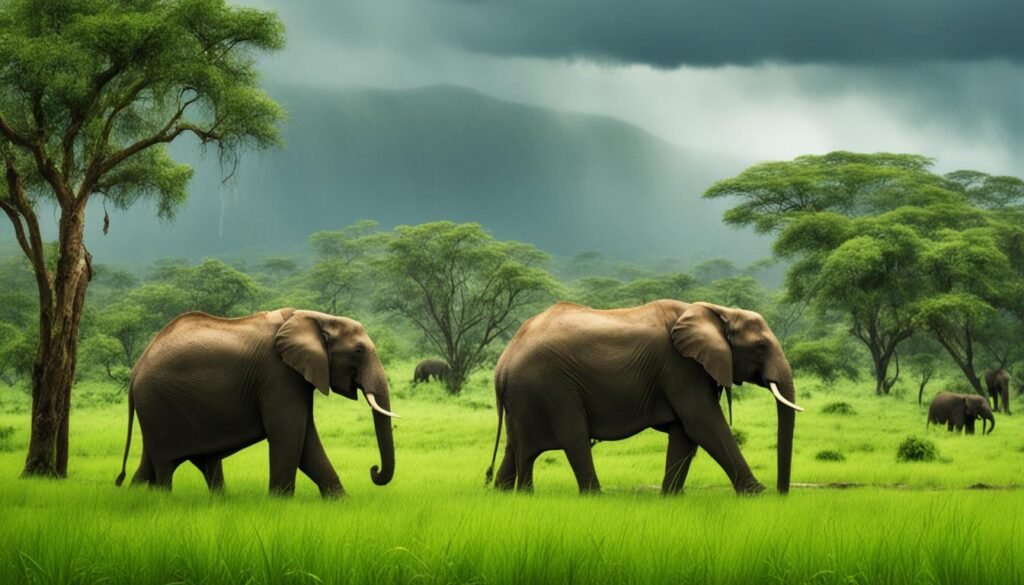
The wet season in Zambia runs from December to April. It’s a great time to see the country’s beautiful landscapes. The rain makes everything green and peaceful.
January and February are the wettest months. But March is perfect for birdwatching as many birds migrate back. This makes your safari even more exciting.
January and February: The Height of the Rainy Season
January and February are the wettest months in Zambia. This can cause some roads to close. But the scenery is stunning for photographers and nature lovers.
The wildlife might be harder to see because of the dense greenery. But the scenery is beautiful, making your trip special.
March: A Great Month for Birdwatching
March is a great time for birdwatching in Zambia. Many migratory birds return, adding color and sound to your safari. It’s perfect for those who love birds.
You’ll see many species in the forest. This makes your trip exciting and a must-do for birdwatchers.
April: Budget-Friendly Safaris
April is a good time for safaris because the wet season is ending. It’s the start of the shoulder season, which means lower prices for accommodations. Finding animals might be a bit harder because of the greenery.
But, the lower prices and fewer people make it a good time to visit. As the wet season ends, it gets better for seeing animals, especially as the grass grows less.
| Month | Key Features | Wildlife Viewing |
|---|---|---|
| January | Heavy rainfall, vibrant landscapes | Challenging due to dense vegetation |
| February | Continued rainfall, lush greenery | Challenging due to dense vegetation |
| March | Migration of birds, stunning scenery | Excellent for birdwatching |
| April | End of rainy season, budget-friendly | Improving as grass recedes |
Transitioning into the Dry Season (May to June)
May brings excitement for those planning a safari in Zambia. It marks the start of the dry season. Temperatures drop, making it great for outdoor activities. The scenery changes, with vibrant colors making it perfect for photos and spotting wildlife.
May: Ideal Conditions for Scenic Views
May is a great time to see Zambia’s beauty. The cooler weather and clear skies are ideal for sightseeing. You’ll see lush green landscapes and bright blue skies. Wildlife is plentiful, and there are fewer people, offering a unique wild experience.
June: Beginning of Peak Safari Season
June kicks off the peak safari season in Zambia. The dry season makes seeing wildlife easier. Animals gather near water, so you’re likely to see elephants, lions, and more. Safari camps open, ready for travelers seeking adventure. June is a top choice for a memorable safari.
| Month | Temperature Range (°F) | Wildlife Viewing | Scenic Features |
|---|---|---|---|
| May | 65 – 78 | Good | Vibrant landscapes |
| June | 60 – 75 | Excellent | Clear skies |
Peak Safari Season in Zambia (July to October)
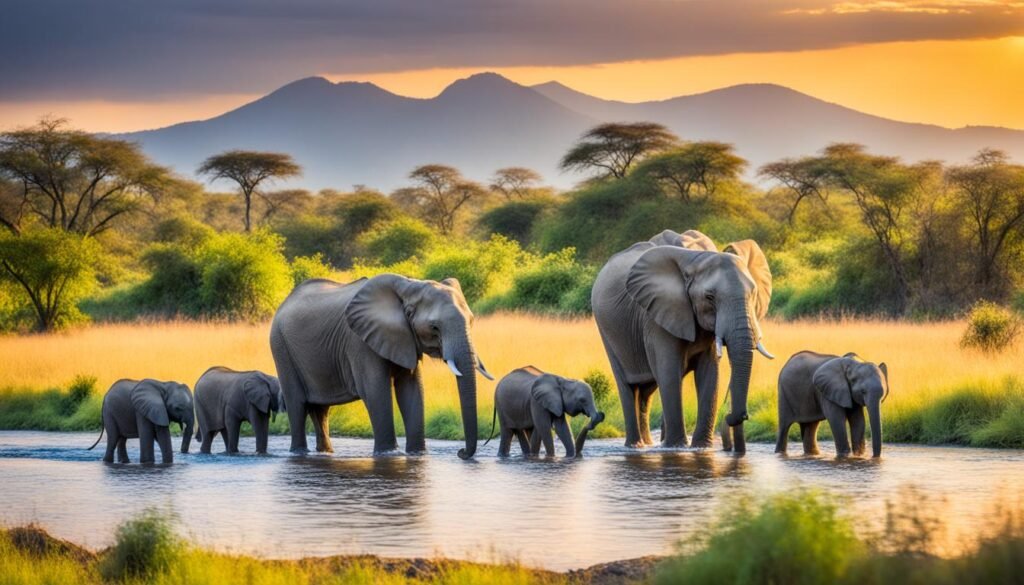
The peak safari season in Zambia is from July to October. This period offers great chances to see wildlife. As the dry season goes on, animals gather near water, making them easier to spot.
This time is perfect for seeing lots of animals and enjoying the weather for safaris.
July: Best Wildlife Viewing Opportunities
July is a top month for seeing wildlife in Zambia. The dry season makes it easier to see animals because of less vegetation. Places like South Luangwa National Park are great for seeing lions, elephants, and more.
Going on safaris in the early morning or late afternoon in July is a good idea.
August: The Perfect Time for Walking Safaris
August is ideal for walking safaris, especially in South Luangwa National Park. This park is famous for these adventures. Guides take you through the wild, showing you animal tracks and how the ecosystem works.
The weather is nice, making it great for being outdoors. It’s the best month to feel close to nature.
September and October: Adjusting to the Rising Heat
September brings hotter weather, which changes how animals act. It’s best to go on safaris in the morning or late afternoon. You’ll need to drink a lot of water.
As the dry season ends, days get even hotter. By October, it’s very hot. But, it’s also a time for unique and memorable wildlife sightings.
| Month | Wildlife Viewing | Activities | Considerations |
|---|---|---|---|
| July | Excellent visibility; frequent sightings | Game drives | Cooler temperatures |
| August | Great for walking safaris | Guided nature walks | Comfortable temperatures |
| September | Wildlife gathers around water | Morning and late afternoon safari | Increasing heat |
| October | Intense activity drops during peak heat | Early morning excursions | Stay hydrated |
Exploring Off-Season Travel in Zambia (November)
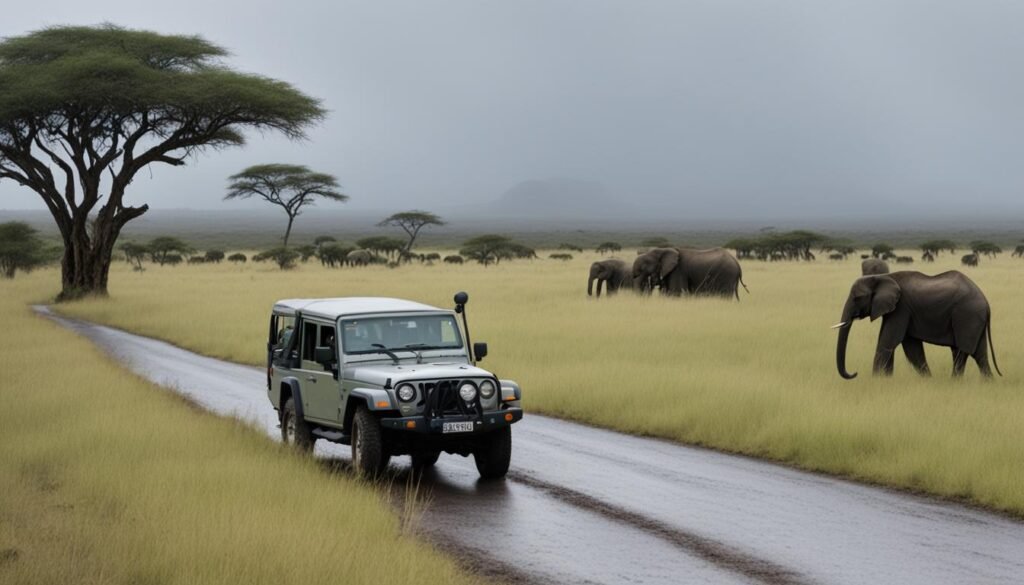
November is a great time to visit Zambia if you’re looking for off-season travel. You’ll find lower rates for accommodations, which is perfect for those watching their budget. Plus, with fewer people around, you get to enjoy Zambia’s beauty and wildlife up close.
November: Lower Rates and Fewer Crowds
Traveling in November means big savings and a chance to enjoy Zambia’s beauty and wildlife. Many places to stay offer discounts, letting you experience luxury safaris without spending a lot. The dry season is ending, so there are fewer people around. This makes it a perfect time to connect with nature, from green parks to calm rivers.
Highlighting the Liuwa Plain Migration
The Liuwa Plain migration is a must-see in mid-November. It’s Africa’s second biggest wildebeest migration, attracting nature lovers and photographers. Seeing thousands of wildebeest move across the plains is an experience you won’t forget. Traveling in November lets you see this amazing event in a peaceful setting, making your safari adventure unique.
Zambia Safari Weather: What to Expect
Planning your safari adventure means understanding the weather in Zambia. This guide covers the main temperature changes and rain patterns throughout the year. It helps you get ready for unforgettable wildlife experiences.
Temperature Variations Throughout the Year
Zambia’s weather changes a lot throughout the year, impacting your safari comfort. The dry season, from May to October, is cooler with temperatures in the mid-70s to mid-80s Fahrenheit. This is a nice change from the hot, humid wet season.
- May: Daytime temperatures are between 25°C/77°F and nighttime lows drop to around 11°C/52°F.
- June to August: Morning temperatures hover around 10°C/50°F with comfortable afternoons at 23°C/73°F.
- September and October: This period signals warmer days, with temperatures often reaching 31°C/88°F, and sometimes surpassing 40°C/104°F in lower-lying parks.
Rain Patterns and Their Effects on Safaris
The rain in Zambia affects how easy it is to get around and see wildlife. The wet season, from November to April, brings heavy rain, especially in December through March. Some camps may close during this time. But, the rain also makes parks look beautiful for photos.
- December: The start of the rainy season, with temperatures rarely dropping below mid-60s F.
- January and February: Months characterized by warm temperatures, with highs in the upper 70s to low 80s F, alongside frequent rain showers.
- April: Marks a slowdown in rains, with daytime temperatures around 79°F and nighttime lows around 60°F as the landscape dries out.
Wildlife Viewing in Zambia: Best Practices
Timing is key when you’re watching wildlife in Zambia. The best places to see animals are in national parks like South Luangwa and Lower Zambezi. The dry season, from May to October, is great for seeing animals gather at water. The wet season is perfect for birdwatching, with many beautiful migratory birds coming to visit.
It’s important to keep a respectful distance from the animals. This way, you don’t stress them out and you get a better view. Having a certified Zambia safari guide can make your trip even better. They know a lot about the animals and can tell you all about them, like the leopard and black lechwe. Their knowledge helps you learn more about conservation and the different ecosystems in Zambia.
Watching wildlife isn’t just about seeing the Big Five. Places like Liuwa Plain National Park and Kasanka National Park show off Zambia’s amazing variety of life. You might see wild dogs, cheetah, or lots of different birds. Every safari is a chance to connect with nature in this beautiful country.


